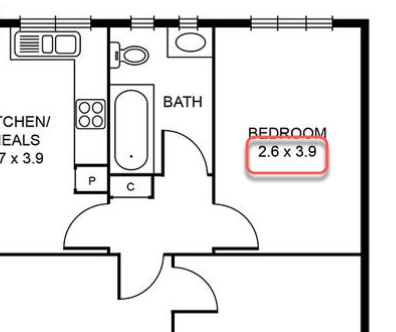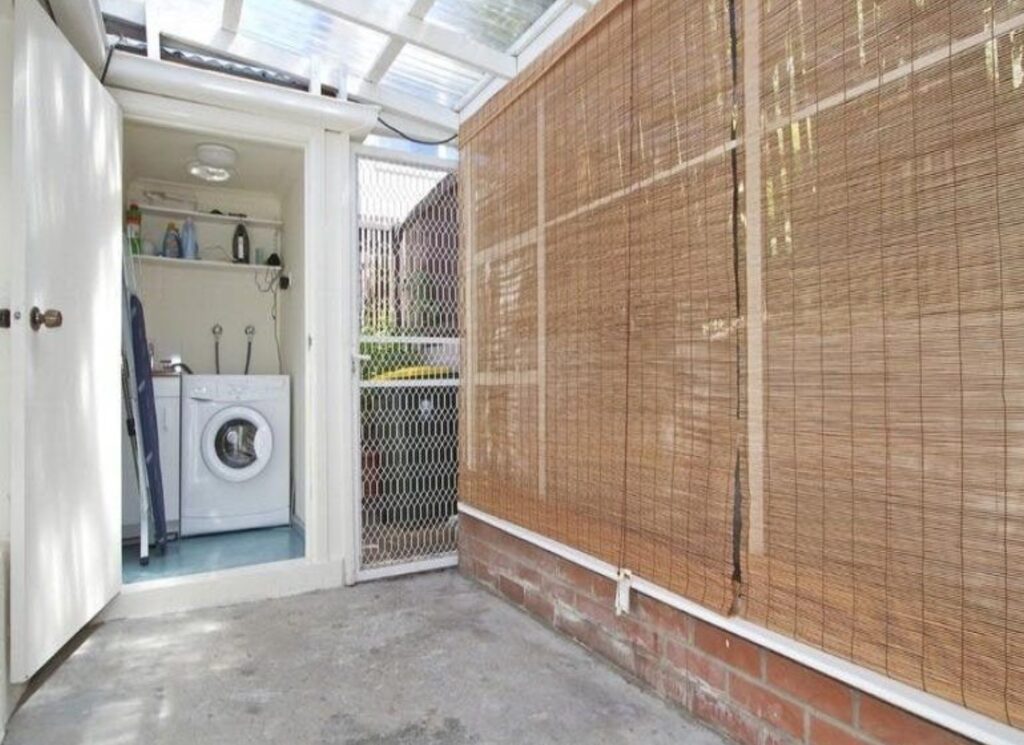Why is it so important? Over the years I’ve seen so many floor plans, layouts and yard sizes that just don’t work. Some can be fixed, but at a cost. And often, the cost results in an overcapitalisation.
So how can buyers avoid poor proportions?
And when should a buyer be prepared to fight hard for a well-proportioned property?
Good property proportions relate to so much more than just layout or room sizes. Proportionality refers to all of the following:
Room size and room dimensions – Skinny rooms that are challenging to furnish, bedrooms that are too tight for a queen sized bed plus two side tables, lounges that are too shallow for a couch and a TV, kitchens with insufficient space for a fridge, dining spaces that require the table to sit against the wall… these are all problematic room sizes. Sometimes a well-thought out renovation and removal of a wall can eliminate the issue, but more often than not this requires significant building works, council permits and overcapitalisation.

A broad rule of thumb we adopt when it comes to bedroom dimensions is to resist a room dimension that is less than 2.8m.
Yard (or balcony/terrace) size versus total internal floor area – some dwellings don’t require a large yard, but this preference is commensurate with the dwelling size, location and likely inhabitant. A compact 1BR or 2BR apartment may only require a small enough balcony for two chairs and a table, (or even just some pot plants), and likewise a cute terrace house may only require a small courtyard with space for a Weber BBQ and a picnic sized table. However, a family home in a family area needs a secure yard, and an impressive, large apartment with a great vista deserves a remarkable terrace for entertaining. When such properties are missing these attributes, they are tough to sell, hard to rent and they underperform, particularly in a down market. Sadly, no amount of renovating or clever creativity can solve this problem.

Block shape – Sometimes a strange block shape can be a developer’s dream, but it’s rarely an inhabitant’s dream. Some cultures shy away from non-rectangular blocks, but generally most buyers shy away from strange shapes or pointy triangular ends. If it’s a bargain, buyers need to ask themselves why. And are they paying for a portion of land that is broadly unusable?
Position of dwelling on the block – The land size is not as relevant if the dwelling is set right back on the block and the front yard is not fenced. Furthermore, a young family are less likely to feel excited about a house with exposed yard, as safety concerns are paramount with young children. This particular compromise can sometimes be addressed with high fences and secure yard potential, but it is critical that buyers check with their council about fence height limits, fence restrictions, covenants and set backs before signing the contract if they have a plan in mind to secure the front of the property.
Usability of the yard – If it’s steeply sloping, has marsh/river/dam, is covered by wilderness or has access easements for neighbours to use, how usable is it, really?
Living space ratio to bedroom number – It’s unusual for a house to be originally built with a disproportionate layout. It’s usually a renovator who compromises on a good floor plan and creates the issue. Too often, I see three bedroom, single-fronted terraces or cottages with totally insufficient living space, or four bedroom family homes with dining/living/kitchen all crammed into one mediocre-sized space. Once a house is a home to four or five people, it needs a living space to reflect this. Renters and buyers will avoid homes with living spaces that are too tight for their needs.
Despite the best intentions, the addition of an extra bedroom can sometimes de-value a property.

Bathroom count to bedroom number – The same can be said for multiple-bedroom houses with only one bathroom. A rule of thumb is ‘four bedrooms needs at least two bathrooms.’ We also believe that three bedroom dwellings are recommended to offer an additional toilet, powder room or a dual access bathroom. Bathroom adds are often a clever way to bolster the value (and desirability) of a dwelling, but it helps to check the broad layout and placement of wet areas when considering this transformation.
Lastly, the appropriateness of layout for the likely demographic of inhabitant is important. Older inhabitants need to consider the long term use of a property, taking into account stairs, mobility challenges, doorway/hall width, height of storage and outdoor space. School age families should think about living zoning, study areas, teenage lifestyles and outdoor space.
Too many people apply what they think is a clever renovation, only to realise they’ve risked overcapitalisation.
If in doubt, chat to a property professional, (and that includes property managers, selling agents and designers).
REGISTER TO OUR NEWSLETTER
INFORMATION
CONTACT US
1A/58 ANDERSON STREET,
YARRAVILLE VIC 3013
0422 638 362
03 7000 6026
CATE@CATEBAKOS.COM.AU
